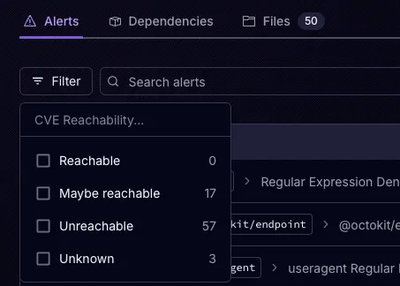
Product
Introducing Rust Support in Socket
Socket now supports Rust and Cargo, offering package search for all users and experimental SBOM generation for enterprise projects.
python-pirateweather
Advanced tools
This is a wrapper for the Pirate Weather API. It allows you to get the weather for any location, now or in the past.
The Basic Use section covers enough to get you going. I suggest also reading the source if you want to know more about how to use the wrapper or what its doing (it's very simple).
You should use pip to install python-pirateweather.
Simple!
Although you don't need to know anything about the Pirate Weather API to use this module, their docs are available at https://pirateweather.net/en/latest/.
To use the wrapper:
import pirateweather
api_key = "YOUR API KEY"
lat = -31.967819
lng = 115.87718
forecast = pirateweather.load_forecast(api_key, lat, lng)
The load_forecast() method has a few optional parameters. Providing your API key, a latitude and longitude are the only required parameters.
Use the forecast.DataBlockType() eg. currently(), daily(), hourly(), minutely() or flags() methods to load the data you are after.
These methods return a DataBlock. Except currently() which returns a DataPoint. The flags data block contains information used to generate your forecast such as the models used, when they were last updated, the nearest station used (currently always returns 0), the units used in your forecast and the version of the Pirate Weather API.
byHour = forecast.hourly()
print(byHour.summary)
print(byHour.icon)
The .data attributes for each DataBlock is a list of DataPoint objects. This is where all the good data is :)
for hourlyData in byHour.data:
print(hourlyData.temperature)
This makes an API request and returns a Forecast object (see below).
Parameters:
false. If true the function will request the json data as it is needed. Results in more requests, but maybe a faster response time.false. If "hourly" the API will hourly data for 168 hours instead of the standard 48 hours.1. If set to 2 the API will return fields that were not part of the Dark Sky API.darksky. If set to pirate the API will return icons which aren't apart of the default Dark Sky icon set.This function allows manual creation of the URL for the Pirate Weather API request. This method won't be required often but can be used to take advantage of new or beta features of the API which this wrapper does not support yet. Returns a Forecast object (see below).
Parameters:
pirateweather.manual will not return the forecast object directly, instead it will be passed to the callback function. Make sure it can accept it.The Forecast object, it contains both weather data and the HTTP response from Pirate Weather
Attributes
Methods
Contains data about a forecast over time.
Attributes (descriptions taken from the pirateweather.net website)
Contains data about a forecast at a particular time.
Data points have many attributes, but not all of them are always available. Some commonly used ones are:
Attributes (descriptions taken from the pirateweather.net website)
For a full list of PirateWeatherDataPoint attributes and attribute descriptions, take a look at the Pirate Weather data point documentation (https://pirateweather.net/en/latest/API/#data-point)
Requests with a naive datetime (no time zone specified) will correspond to the supplied time in the requesting location. If a timezone aware datetime object is supplied, the supplied time will be in the associated timezone.
Returned times eg the time parameter on the currently DataPoint are always in UTC time even if making a request with a timezone. If you want to manually convert to the locations local time, you can use the offset and timezone attributes of the forecast object.
Typically, would would want to do something like this:
# Amsterdam
lat = 52.370235
lng = 4.903549
current_time = datetime(2015, 2, 27, 6, 0, 0)
forecast = pirateweather.load_forecast(api_key, lat, lng, time=current_time)
Be caerful, things can get confusing when doing something like the below. Given that I'm looking up the weather in Amsterdam (+2) while I'm in Perth, Australia (+8).
# Amsterdam
lat = 52.370235
lng = 4.903549
current_time = datetime.datetime.now()
forecast = pirateweather.load_forecast(api_key, lat, lng, time=current_time)
The result is actually a request for the weather in the future in Amsterdam (by 6 hours) which isn't supported by the Pirate Weather API.
If you're doing lots of queries in the past in different locations, the best approach is to consistently use UTC time. Keep in mind datetime.datetime.utcnow() is still a naive datetime. To use proper timezone aware datetime objects you will need to use a library like pytz <http://pytz.sourceforge.net/>_
FAQs
A thin Python Wrapper for the Pirate Weather API
We found that python-pirateweather demonstrated a healthy version release cadence and project activity because the last version was released less than a year ago. It has 1 open source maintainer collaborating on the project.
Did you know?

Socket for GitHub automatically highlights issues in each pull request and monitors the health of all your open source dependencies. Discover the contents of your packages and block harmful activity before you install or update your dependencies.

Product
Socket now supports Rust and Cargo, offering package search for all users and experimental SBOM generation for enterprise projects.

Product
Socket’s precomputed reachability slashes false positives by flagging up to 80% of vulnerabilities as irrelevant, with no setup and instant results.

Product
Socket is launching experimental protection for Chrome extensions, scanning for malware and risky permissions to prevent silent supply chain attacks.